Q&A Lists of Foods that Freeze Well, Poorly and Badly
Some foods freeze 'Well', others are moderately affected by freezing and thawing and so they rate as 'Poor'.
Some foods should be 'Avoided', as they just don’t cut it and end up a mushy, soggy mess when thawed.
Many dairy foods separate when they are frozen and thawed., making then unusable.
That said, freezing has many advantages for food that are suitable:
- It saves money. You can buy in bulk when food are in season and then freeze for out of season use.
- It is very convenient. Having a well-stocked freezer means fewer unnecessary trips to the shops.
- It saves time. You can cook things ahead of time, perhaps in bulk, freeze them and thaw for a quick meal or snack later.
- It is fresh and delicious, compared with dried and tinned foods.
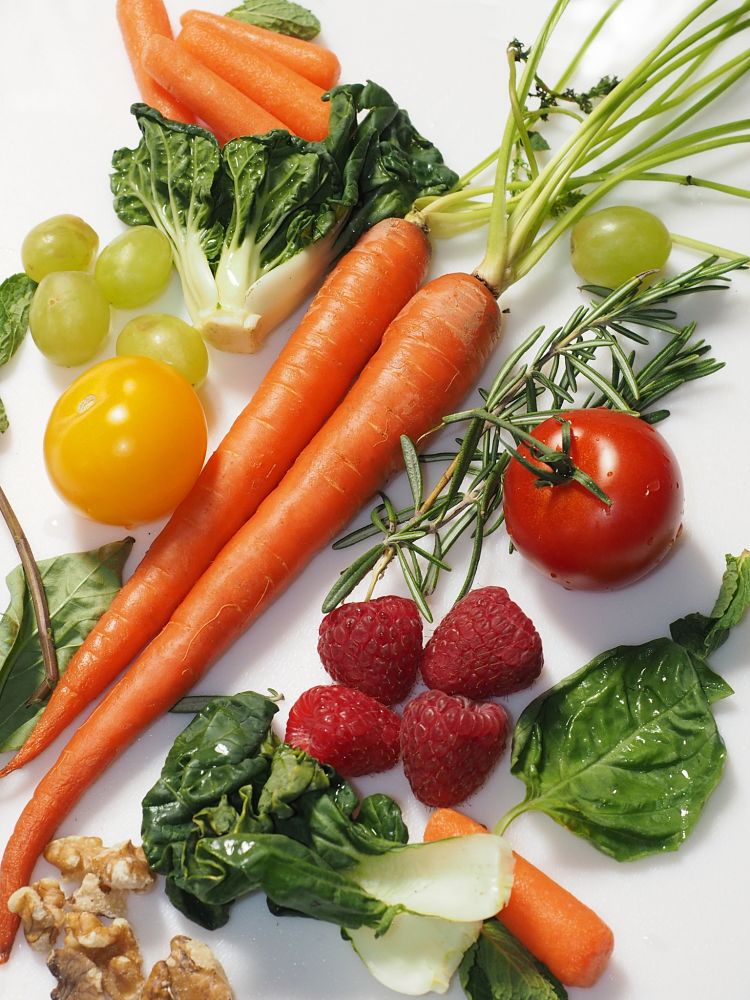
This article provides guidelines to help you discover which foods are
GOOD for freezing,
POOR for freezing with some loss of quality when thawed. There are some preparation tips which helps reduce the loss of flavor
AVOID Freezing - You should avoid freezing these foods which become degraded and unappealing when frozen and thawed. Most of these foods have high water contents and the ice crystals that form shatter the texture and form of the fresh food, tuning it into sloppy mush.
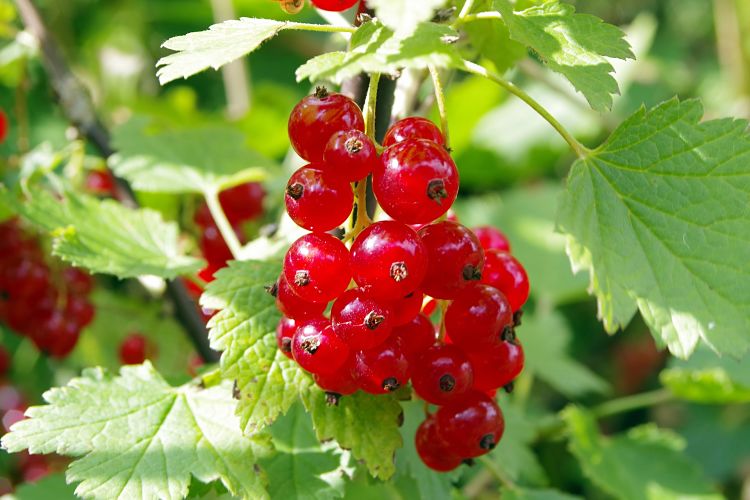
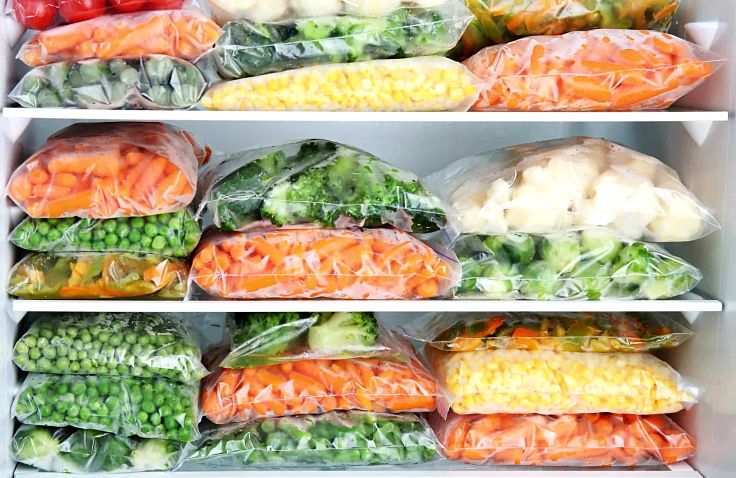
Tips for Knowing When a Food is Suitable for Freezing
Freezing seldom improves the taste, color or texture of the food. If the food doesn't taste good fresh, or it is stale and of poor quality it won’t get any better after freezing and thawing. The possible exception is curries and stews when the freezing softens the meat and tends to blend the tastes together. Mostly the food will have less taste or a slightly different taste. Freezing changes the texture of most food and also dull the color and sparkle of fresh food. However, sometimes the frozen ingredient will be added to a dish where the changes don't matter as much. For example, frozen garlic will usually get chopped or crushed before it is added to the dish.
- Freezing any raw food with a high moisture content such as think cucumbers, lettuce, watermelon, tomatoes, oranges and pears is only worthwhile if you DON'T intend to eat these foods RAW when thawed. The moisture in the food forms ice crystals that smash the structure of these foods into mush. So, only consider freezing these foods when they are going to chopped or processed in a way that the loss of texture and form does not matter.
- Anything creamy, particularly dairy products such as custards, soft cheese, yogurt, butter, sour cream freeze very poorly. When frozen and thawed they separate into curds and whey and they become lumpy and insipid. Freezing these foods is never a good idea.
- Whole eggs and anything with an external shell of container will chatter when frozen as the liquid expands in volume as it freezes. This applies to bottles and any sealed containers filled with liquids or solids with a high water content.
- There are many preparations which make freezing of difficult items work. Don't forget to blanch your vegetables. Many types of food freeze poorly when whole, but work quite well when cut into smaller pieces. This applies to many fruits such as peaches and pears. Chopped vegetables also generally freeze well. Fruits purees and juices freeze very well. Many herbs freeze poorly when whole, but work well when frozen in ice cubes. Expect some loss of texture, but this is less important is a prepared dish with many other ingredients. Learn more of these tricks in the article below.
- Remember, these principles apply to individual foods frozen by themselves as whole items. The issue changes entirely when these foods are mixed with other ingredients in a dish. Similarly most chopped, pureed and juiced foods and ingredients will freeze well.
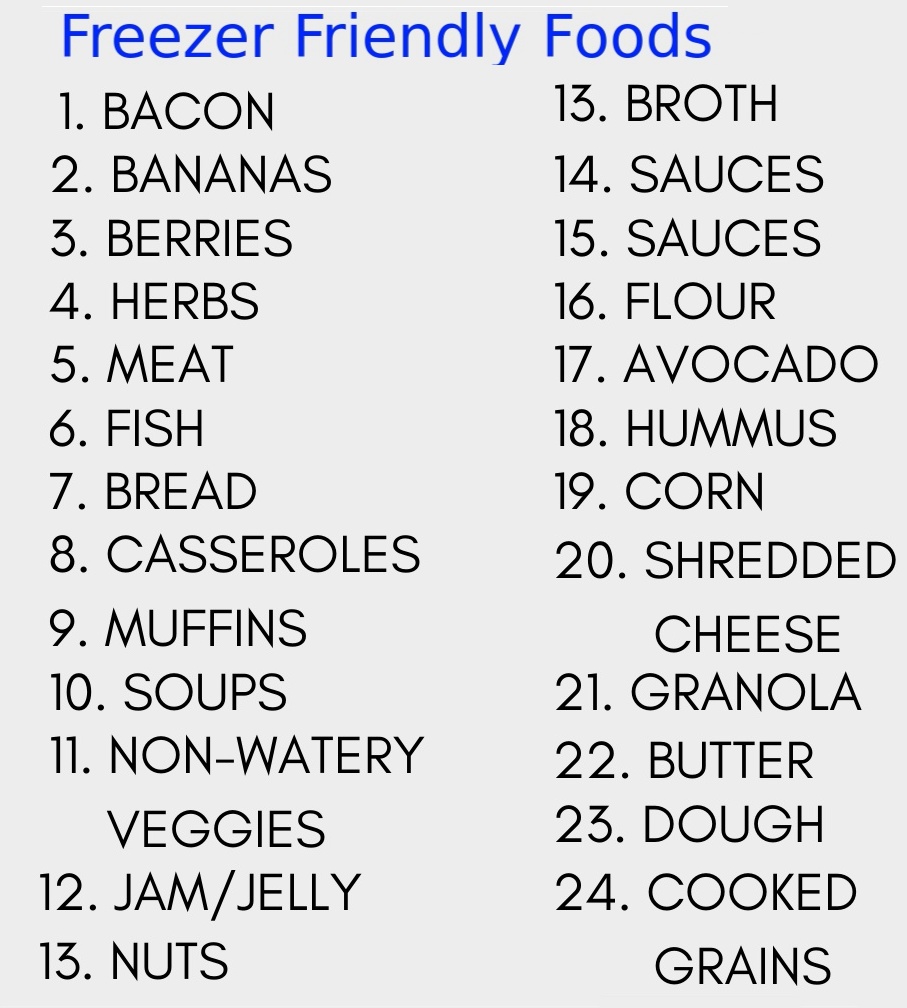
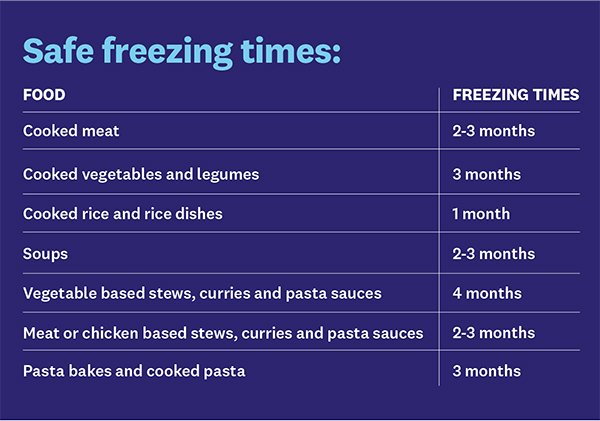
Guide for Thawing
Q&A Can You Safely Refreeze Thawed Foods - Refreezing Myth Dispelled See Danger Zone Food Safety Temperature Charts Cook, Reheat, Chill, FreezeFor normal defrosting, the USDA recommends three ways it considers safe:
- In the refrigerator, for a slow thaw,
- Immerse in cold water for a quicker thaw, but ensure that the water remains cold, and do not use warm water
- In the microwave for a fast thaw.
The best option is overnight slow defrosting in the refrigerator. For a quicker thaw the item can be securely wrapped and immersed in cold water on a bench top. But, make sure the water stays cold during the process. Change it every 30 minutes. If the water gets warm the food will get warm and will start to deteriorate. If using the microwave to defrost, you should aim to cook the thawed food immediately as some of the the food will be warm when you finish. The disadvantage of microwave thawing is that the food may be partially cooked by the microwaving. The thawing may be uneven with some inner parts still frozen. This may make it hard to cook the food evenly.
List of Foods that Do Not Freeze Well
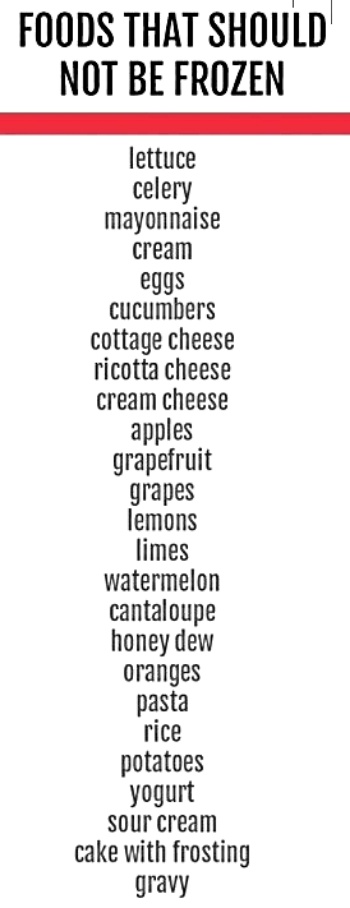
Vegetables => Celery, cucumbers, potatoes (especially raw), lettuce, onions, peppers (especially green), radishes, sprouts, salad greens, kale, leeks, zucchini.
Fruit => Apples, grapefruit, grapes, peaches, plums, lemons, limes, oranges (but citrus is OK), watermelon
Dairy => Cheese (especially soft varieties), mayonnaise, sour cream, cottage cheese, cream cheese, custard, salad dressings, yogurt
Herbs => Unsuitable (but see note below) if frozen alone in sprigs as they will wilt and become mushy: basil, parsley, chives, and most other soft herbs.
Other => Whole eggs in shells, crumb toppings on baked dishes and casserole, frostings, meringue, egg white and cream based sauces and topping, fried foods, pasta, rice, sauces (especially those made with flour or cornstarch).
Tips for Freezing Vegetables and Herbs
- Dice onions, garlic, chilies, or bell peppers, and then add then to freezer bags. Squeeze out the air and flatten to a thin layer. You can the break off a segment as your need them.
- You can freeze whole ears of corn if you blanch them first. You can also cut the corn kernels off the cob. They will freeze well.
- Roasted tomatoes freeze better than raw tomatoes
- Freeze fresh herbs twigs and leaves in ice cube trays with a little water. The frozen herb cubes can be added to soups, stews, or casseroles without thawing.
- Chopped and pureed leafy greens can be frozen for use as an ingredient, not as a main display food.
- Citrus peel and zest freezes very well.
Foods that Freeze Well, Poorly and Foods to Avoid Freezing
Below is a tool to help you get information on the freezing suitability for most foods. The color key used is:
GOOD for freezing,
POOR for freezing,
AVOID Freezing, generally unsuitable
Scroll through the list or enter a food name in the search tool and the information for that food will be displayed.
Search Tool - Enter Items to check for Freezing Suitability
- GOOD - Bacon Cooked - Raw and cooked bacon freezes well. Bake or fry the bacon and then drain and place in a single layer between sheets of wax paper. make a stack and store in a zip-lock plastic bag or container.
- GOOD - Baked Goods - Most baked goods freeze very well. However, some frostings and egg based topping can break down when thawed.
- GOOD - Banana Slices - Whole bananas freeze poorly. Best to peel and slice them before freezing the slices in a single layer between sheets of wax paper.
- GOOD - Berries - Strawberries, raspberries, blackberries, elderberries, blueberries, strawberries - or whatever your favorite variety, all freeze very well. But, some lose the firmness of fresh fruit.
- GOOD - Bread - Bread freezes well. A few seconds in the microwave or oven brings back that 'fresh-baked' softness.
- GOOD - Cakes - Cakes and similar baked items such as flapjacks, cookies, muffins, flans and pies all freeze and thaw well. Freshen them up with a few minutes in the oven or microwave.
- GOOD - Cherries - Cherries and berries all freeze well.
- GOOD - Chocolate - You can freeze chocolate in all its forms without any problems. However, it is best to wrap it well in plastic or waxy paper to stop it drying our and make it less likely to picking up odours and taints. Quick changes in temperature cause problems with chocolate. So, place it in the refrigerator overnight, before freezing. To thaw, place it in the fridge overnight before taking it out to eat or to use in cooking.
- GOOD - Chopped up Chilli and Herbs - The only satisfactory way to freeze fresh herbs and chilli is to chop them up and add them to ice cubes. They can be added to dishes without thawing. Freezing whole does not work as the herbs lose all their form and texture.
- GOOD - Citrus Rinds and Zest - Citrus Rinds and Zest freeze very well in small zip-lock bags or between layers and waxed paper, to stop them dehydrating.
- GOOD - Cookie dough - All cookie doughs and most other doughs freeze very well. You can make small balls or portions ready for placing on baking trays.
- GOOD - Corn on the Cob and Kernels - Best to blanch the corn first in boiling water, cool and then freeze. Whole cobs can be stored for up to about 2 months in their husks in zip-lock bags. Store corn in bags to stop it drying out in the freezer.
- GOOD - Curries and Pasta Sauce Dishes - These cooked dishes all freeze and thaw very well.
- GOOD - Dough, Homemade and Left-Over Bought Dough - You can freeze all types of homemade and bought dough – cookie dough, focaccia dough, pizza dough, pie crust, and most other dough. Shape the dough into a ball or pad shape and wrap it tightly in plastic wrap or in a sealed container.
- GOOD - Flour, Wheat and Other Grains - You can store most flours in your freezer to make it last longer. It thaws well, without any change,
- GOOD - Frosting - Frosting and icings that do not contain raw egg are suitable. Raw egg breaks down when frozen and thawed.
- GOOD - Fruit Pies and Flans - Fruit pies and flans can be frozen, but this works best when frozen before baking. The crusts and toppings of baked pies can deteriorate when thawed.
- GOOD - Garlic, Whole and Cloves- Garlic freezes and thaws with no problems or issues.
- GOOD - Ginger - Ginger can shrivel in the fridge as it loses moisture. It freezes well but needs to be in sealed bags or containers.
- GOOD - Gravy - All gravy freezes well.
- GOOD - Hard Cheese - You can freeze whole blocks of hard cheese and portions. Simply thaw it completely on the counter before putting it back in the fridge. You can also freeze shredded cheese. Adding a tablespoon of flour or cornstarch or flour to the freezer bag helps prevent clumping when the cheese thaws.
- GOOD - Homemade Casseroles, Stews, Asian Dishes - Whole dishes can be frozen as well as portions. Thaw and reheat in your microwave or slowly on your stove top.
- GOOD - Homemade Pancakes, Waffles, French Toast, Pizza Bases, Pie Crusts - These items all freeze well. Reheat them in your oven, microwave, barbecue or your toaster oven.
- GOOD - Meat and Poultry - Raw and cooked meat and poultry freezes and thaws well. Ensure the safety recommendations are followed.
- GOOD - Meat, Poultry and Seafood Prepared Dishes - are all suitable for freezing. Expect some lost of texture, especially for vegetable components.
- GOOD - Mushrooms - are suitable for freezing as they have low moisture levels.
- GOOD - Nuts - Nuts have a high oil content and can go rancid quickly when stored fresh at room temperature. Raw and cooked nuts freeze very well.
- GOOD - Onions - Onions keep well. It is best to peel them first or slice them to make them easier to use when thawed. They are less suitable for serving fresh but they are ideal for cooking. dding some flour to a storage bag helps keep the rings separated so you can use a few at a time. No need to thaw rings, simply add to the dish.
- GOOD - Organic and Other Peanut Butter - Peanut butter freezes well in bags and containers without losing any taste or texture. But, beware that it expands as it freezes and this can crack containers.
- GOOD - Pizza dough - Yes, it freezes and thaws with no change in consistency. Some kneading is required after thawing to redevelop the gluten.
- GOOD - Sauces, Pastes, Stocks, and Juices - Tomato sauce and paste, stocks. broths, soups, pesto, marinades, sofrito, chipotle peppers and other herbs in adobo sauce, curry paste, and other similar foods all freeze very well. Fruit and vegetable juices freeze very well.
- GOOD - Shredded and Grated Cheese - Shredded and Grated Hard Cheeses all freeze well. Crumbled feta is also suitable. There are some issues with soft cheeses which can separate and break down when frozen.
- GOOD - Some Fruits, Peeled and Sliced - Many fruits that are unsuitable for freezing whole can be frozen when peeled and sliced. Some examples are: Mango slices, Pineapple (chunks), Melon (chunks), Peaches and Nectarines (peeled, sliced). Freeze in a single layer between sheets of waxed paper. Once frozen store in bags and containers.
- GOOD - Some Hard Vegetables - Most hard vegetables are suitable for freezing, either whole, sliced or chopped. Some examples are: Artichokes, Carrots, Cauliflower, Peas, Potatoes, Pumpkin, Asparagus, Avocado (pureed and drizzled with lemon juice), Beets, Broccoli, Brussels sprouts, Squash (summer squash, zucchini, and all winter squashes), Sweet potatoes.
- GOOD - Soups and Chili Dishes - These dishes are suitable for freezing, but remember to allow for expansion in the container when freezing.
- GOOD - Tomato paste - The various forms and types all freeze very well.
- POOR - Avocado - Avocados may seem unlike to be suitable. But, it can be frozen for use in various dishes, not for serving fresh. To prepare avocado for freezing, peel and remove the flesh. Dice the flesh and quickly toss in lemon juice to stop it oxidising and going brown. Place the avocado pieces into a zip-lock freezer bag, removing as much air from the bag as possible. Thaw by placing the bag in the fridge and leaving overnight. It can be defrosted in a warm water bath or the microwave.
- POOR - Breakfast or Lunch Sandwiches - Pre-made sandwiches all freeze well. But, avoid vegetables with high water contents such as lettuce and celery which can become mushy.
- POOR - Brown Rice - Partially cooked and raw brown rice and white rice freeze well. Cooked rice can be mushy and loses its single-grain form and texture.
- POOR - Butter - Butter can be frozen by wrapping it in plastic freezer wrap or heavy-duty aluminium foil. Then, place this into a heavy-duty freezer bag and seal it well to stop the butter drying out. Frozen butter will keep up for 5-7 months.
- POOR - Cooked Grains - Most cooked grains such as rice, quinoa, barley, can be frozen. They can lose some of their 'fresh cooked' texture and may be hard to thaw so that the grains remain separate.
- POOR - Cooked Pasta Not in Sauce - Cooked pasta, not in a sauce can be frozen, but it may lose its 'fresh' form and texture. Reheat the pasta by running hot tap water over the bag for several minutes. Uncooked pasta (wet or dry), like dough can also be frozen.
- POOR - Cracked Eggs - Whole eggs will crack. So, crack the eggs first into a freezer bag, or a container. Or you can crack eggs into an ice cube tray (separating the yolks and whites). Simply thaw in the refrigerator, before use.
- POOR - Fruit, Whole - Most whole fruit does not freeze well. Peeled fruit cut into sections is OK.
- POOR - Mashed Potatoes - Freezes well in freezer bags and containers. Can be stored in the freezer for at least 3 months.
- POOR - Non-Berry Fresh Fruit - Most whole fruit does not freeze well. Peeled fruit cut into sections and fruit juice can be stored frozen.
- POOR - Potato Chips, Crackers, & Pretzels - These items store well in the freezer. They retain their crispness.
- POOR - Rice - Raw or Pre-cooked rice is the best option. Cooked rice can lose its fluffiness and can be mushy.
- POOR - Soft Cheese, Cream and Cottage Cheese - - The texture of soft cream and cheeses changes when frozen and thawed. Cream cheese works OK. Cream tends to separate.
- POOR - Sour Cream - The texture of sour cream changes after being frozen and thawed, so it is a poor option especially when used as a topping. The changes in texture does not matter when sour creram is to be used as an ingredient in various dishes. But, overall it is not a good option.
- POOR - Tofu - The texture of Tofu degrades when frozen.
- POOR - Vegetable Scraps and Left Overs - You can save bits and pieces of vegetable scraps and left-overs in the freezer. The hard vegetables work best. The changes in texture of the sifter vegetables matter little when the vegetables are to be added to broths, soups, curries or stews.
- POOR - Yogurt - Freezing yogurt works, but it can separate when thawed and the fruit within it can lose its texture. Frozen yogurt is a great substitute for ice-cream.
- POOR - Milk, Dairy and Other Milks - Milk can separate when frozen and can be quite different to fresh milk. It expands when frozen and can crack containers.
- AVOID - Bananas, Whole - Whole bananas do not freeze well. It is better to peel them and freeze the slices.
- AVOID - Buttermilk - Thawed buttermilk tends to separate like other dairy products and nut milks. It is still only suitable for use in various dishes and baking.
- AVOID - Cheese - Freezing cheese changes its texture, especially softer cheeses which can separate as well. Some cheeses become granular and mealy while others can get dense and heavy. Generally cheeses last for months when properly stored in the refrigerator, and so you don't need to freeze them.
- AVOID - Citrus Fruits - Citrus fruits such as oranges, mandarins, lemons and limes have a high water content and their texture degrades when frozen. Small pieces and juice freezes well.
- AVOID - Cream based Soups and Sauces - Like cream itself, these items will separate and show poor texture when thawed.
- AVOID - Cream, heavy - Thawed cream and other dairy products are degraded by freezing and thawing.
- AVOID - Cream, whipped - whipped cream loses its texture when thawed and it can't be whipped up again as the cream separates.
- AVOID - Cucumber - The ice crystal that form turn cucumber into a mushy mess.
- AVOID - Desserts with Meringue - Soft Meringue is destroyed by freezing as its components separate.
- AVOID - Fresh Herbs - Fresh herbs are degraded by freezing. Small pieces can be frozen in ice cubes, but generally not worthwhile.
- AVOID - Fresh Tomatoes - Fresh tomatoes become a soggy, mushy mess when defrosted. Cooked tomato puree is a better option.
- AVOID - Fried foods - Fried foods become limp and soggy when defrosted.
- AVOID - Frostings and Icing that Include Raw Egg Whites - These items are degraded when frozen and thawed as the egg separates and becomes granular.
- AVOID - Fruits and Vegetables with High Water Content - These foods become limp, mushy and soggy when thawed because of the ice crystals that form inside these items.
- AVOID - Mayo - Mayonnaise becomes granular and clumpy after freezing and defrosting.
- AVOID - Fully Cooked Pasta - Not suitable as it loses its form and structure and resembles over-cooked mushy pasta.
- AVOID - Fully Cooked Rice - Loses its fluffy, free-grain texture and becomes mushy.
- AVOID - Gelatin and Jellies - The ice crystals that form destroy the structure and form.
- AVOID - Grapes - Grapes are destroyed by freezing becoming limp and mushy.
- AVOID - Hard-boiled Eggs - Can lose their form and texture.
- AVOID - Jelly and Dessert with Jelly - You can not successfully freeze jelly as the chemical bonds that form the structure of the gel are broken by the ice crystals that form when frozen.
- AVOID - Lettuce - Freezing lettuce is a disaster. It resembles slime when defrosted.
- AVOID - Previously Frozen Meat, Poultry and Seafood - Thawing and refreezing food is very risky as it can be contaminated.
- AVOID - Raw Potatoes - Raw potatoes can turn mealy and grainy when frozen. Cooked and mashed potato is a better option.
- AVOID - Salad Greens - You can't freeze soft salad greens because the water within them turns to ice crystals, shattering their structure.
- AVOID - Soft Cheeses - - Most soft cheeses will separate and become granular. This applies to feta, cream cheese, cottage cheese, goat's cheese and other soft and spreadable cheeses.
- AVOID - Sour cream, Cream-based Products - Most dairy products will separate and become globular when frozen and thawed. This applies to sour cream, thick cream, light cream, yogurt, and custards.